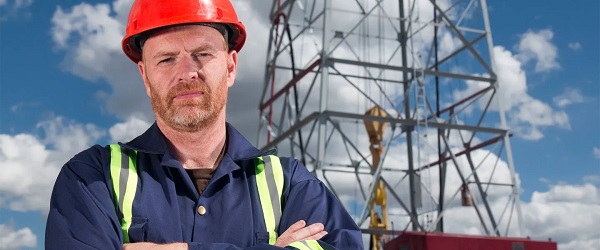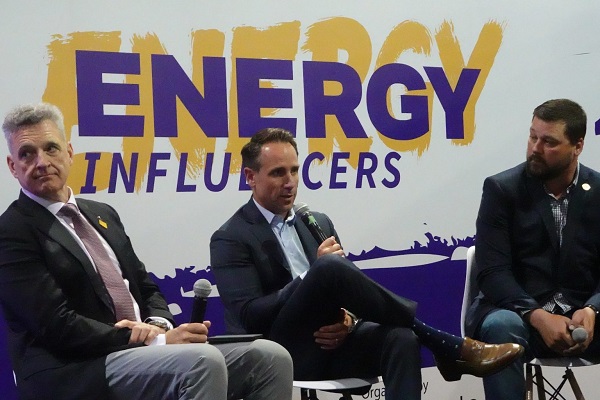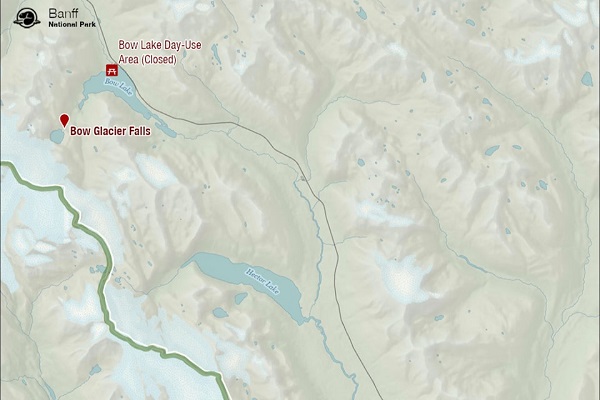Alberta
Alberta’s Danielle Smith announces new parental rights policy to be released this week
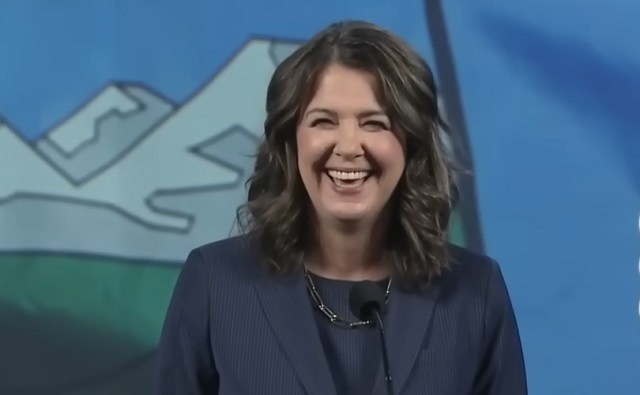
From LifeSiteNews
‘When it comes to the balancing of the parental rights with kids growing into adulthood, I don’t think that there’s anything wrong with parents wanting to protect their child’s innocence as long as possible on issues of sexuality,’ Danielle Smith said over the weekend.
Alberta is set to unveil new legislation to protect parental rights within the school system this week.
On January 27, Alberta Premier Danielle Smith announced that this week her United Conservative Party (UPC) will publish a new parental rights policy after promising the legislation last November.
“We’ll be releasing policy about this next week and I’m really hopeful that we can depoliticize the discussion and be thinking about the kids who are listening to us adults, talking about these issues that are impacting them and making sure we get the right balance,” Smith told the audience of her Corus radio call-in show.
Smith’s comments came in response to a caller named Linda who referenced Smith’s promises during the UPC’s annual general meeting (AGM) and questioned when Smith would introduce “an Alberta parental rights bill.”
“I want every parent listening today to hear me loud and clear. Parents are the primary caregivers and educators of their children,” Smith had promised at the AGM last November.
“Regardless of how often the extreme left undermines the role of parents, I want you to know that parental rights and choice in your child’s education is and will continue to be a fundamental core principle of this party and this government, and we will never apologize for it,” she declared.
In November, UPC members passed a slew of pro-family, medical freedom, and anti-woke policies at its AGM, including one calling for a bill to support “comprehensive parental rights” in education. While the policies are non-binding, merely serving as suggestions for the Alberta government, Smith told reporters at the time that her government does support the party’s grassroots process.
During Saturday’s show, Smith revealed that consultations have taken place about such a policy, and that new legislation will be published shortly.
“When it comes to the balancing of the parental rights with kids growing into adulthood, I don’t think that there’s anything wrong with parents wanting to protect their child’s innocence as long as possible on issues of sexuality. I think that that’s a good instinct,” she told the caller.
“But they do get to a point where they start making their own decisions and so that’s the balance that we’re trying to get to, is how do we make sure that we’re supporting children as they grow into adults to become the people they want to be, while making sure that parents also have the right to ensure that materials in education and exposure to some of these discussions happen at an age-appropriate level?” Smith questioned.
Smith’s promise comes after both Saskatchewan and New Brunswick introduced legislation to protect parental rights despite incurring the ire of many in the LGBT community.
Last September, Saskatchewan Premier Scott Moe invoked his government’s notwithstanding clause to protect legislation mandating that parents be told if their child changes “genders” at school; a judge had ruled against enforcement of the law earlier that day.
The notwithstanding clause, embedded in section 33 of the Canadian Charter of Rights and Freedoms, allows provinces to temporarily override sections of the Charter of Rights and Freedoms to protect new laws from being scrapped by the courts.
Saskatchewan had followed the example of New Brunswick Premier Blaine Higgs, who earlier in 2023 had been condemned by LGBT activists for reviewing the province’s “gender identity” policy that allowed schools to hide students’ “transgender” status from parents.
“For [a desire to be identified with the opposite sex] purposefully to be hidden from the parents, that’s a problem,” Higgs told reporters at the time.
In early August, pro-LGBT politicians tried unsuccessfully to remove Higgs from office. Their failure led Progressive Conservative Party members to say that, despite the media backlash, Higgs has the support of the “silent majority.”
According to an August 2023 survey, 86 percent of Saskatchewan-based participants are for parental rights and support the province’s new laws.
There have also been numerous protests against the LGBT agenda in schools, including the September 2023 “Million Person March” which drew thousands of Canadians from across the country.
Alberta
The permanent CO2 storage site at the end of the Alberta Carbon Trunk Line is just getting started

Wells at the Clive carbon capture, utilization and storage project near Red Deer, Alta. Photo courtesy Enhance Energy
From the Canadian Energy Centre
Inside Clive, a model for reducing emissions while adding value in Alberta
It’s a bright spring day on a stretch of rolling farmland just northeast of Red Deer. It’s quiet, but for the wind rushing through the grass and the soft crunch of gravel underfoot.
The unassuming wellheads spaced widely across the landscape give little hint of the significance of what is happening underground.
In just five years, this site has locked away more than 6.5 million tonnes of CO₂ — equivalent to the annual emissions of about 1.5 million cars — stored nearly four CN Towers deep beneath the surface.
The CO₂ injection has not only reduced emissions but also breathed life into an oilfield that was heading for abandonment, generating jobs, economic activity and government revenue that would have otherwise been lost.
This is Clive, the endpoint of one of Canada’s largest carbon capture, utilization and storage (CCUS) projects. And it’s just getting started.
Rooted in Alberta’s first oil boom
Clive’s history ties to Alberta’s first oil boom, with the field discovered in 1952 along the same geological trend as the legendary 1947 Leduc No. 1 gusher near Edmonton.
“The Clive field was discovered in the 1950s as really a follow-up to Leduc No. 1. This is, call it, Leduc No. 4,” said Chris Kupchenko, president of Enhance Energy, which now operates the Clive field.
Over the last 70 years Clive has produced about 70 million barrels of the site’s 130 million barrels of original oil in place, leaving enough energy behind to fuel six million gasoline-powered vehicles for one year.
“By the late 1990s and early 2000s, production had gone almost to zero,” said Candice Paton, Enhance’s vice-president of corporate affairs.
“There was resource left in the reservoir, but it would have been uneconomic to recover it.”
Gearing up for CO2
Calgary-based Enhance bought Clive in 2013 and kept it running despite high operating costs because of a major CO2 opportunity the company was developing on the horizon.
In 2008, Enhance and North West Redwater Partnership had launched development of the Alberta Carbon Trunk Line (ACTL), one of the world’s largest CO2 transportation systems.
Wolf Midstream joined the project in 2018 as the pipeline’s owner and operator.
Completed in 2020, the groundbreaking $1.2 billion project — supported by the governments of Canada and Alberta — connects carbon captured at industrial sites near Edmonton to the Clive facility.
“With CO2 we’re able to revitalize some of these fields, continue to produce some of the resource that was left behind and permanently store CO2 emissions,” Paton said.
An oversized pipeline on purpose
Each year, about 1.6 million tonnes of CO2 captured at the NWR Sturgeon Refinery and Nutrien Redwater fertilizer facility near Fort Saskatchewan travels down the trunk line to Clive.
In a unique twist, that is only about 10 per cent of the pipeline’s available space. The project partners intentionally built it with room to grow.
“We have a lot of excess capacity. The vision behind the pipe was, let’s remove barriers for the future,” Kupchenko said.
The Alberta government-supported goal was to expand CCS in the province, said James Fann, CEO of the Regina-based International CCS Knowledge Centre.
“They did it on purpose. The size of the infrastructure project creates the opportunity for other emitters to build capture projects along the way,” he said.

CO2 captured at the Sturgeon Refinery near Edmonton is transported by the Alberta Carbon Trunk Line to the Clive project. Photo courtesy North West Redwater Partnership
Extending the value of aging assets
Building more CCUS projects like Clive that incorporate enhanced oil recovery (EOR) is a model for extending the economic value of aging oil and gas fields in Alberta, Kupchenko said.
“EOR can be thought of as redeveloping real estate,” he said.
“Take an inner-city lot with a 700-square-foot house on it. The bad thing is there’s a 100-year-old house that has to be torn down. But the great thing is there’s a road to it. There’s power to it, there’s a sewer connection, there’s water, there’s all the things.
“That’s what this is. We’re redeveloping a field that was discovered 70 years ago and has at least 30 more years of life.”
The 180 existing wellbores are also all assets, Kupchenko said.
“They may not all be producing oil or injecting CO2, but every one of them is used. They are our eyes into the reservoir.”

CO2 injection well at the Clive carbon capture, utilization and storage project. Photo for the Canadian Energy Centre
Alberta’s ‘beautiful’ CCUS geology
The existing wells are an important part of measurement, monitoring and verification (MMV) at Clive.
The Alberta Energy Regulator requires CCUS projects to implement a comprehensive MMV program to assess storage performance and demonstrate the long-term safety and security of CO₂.
Katherine Romanak, a subsurface CCUS specialist at the University of Texas at Austin, said that her nearly 20 years of global research indicate the process is safe.
“There’s never been a leak of CO2 from a storage site,” she said.
Alberta’s geology is particularly suitable for CCUS, with permanent storage potential estimated at more than 100 billion tonnes.
“The geology is beautiful,” Romanak said.
“It’s the thickest reservoir rocks you’ve ever seen. It’s really good injectivity, porosity and permeability, and the confining layers are crazy thick.”
CO2-EOR gaining prominence
The extra capacity on the ACTL pipeline offers a key opportunity to capitalize on storage potential while addressing aging oil and gas fields, according to the Alberta government’s Mature Asset Strategy, released earlier this year.
The report says expanding CCUS to EOR could attract investment, cut emissions and encourage producers to reinvest in existing properties — instead of abandoning them.
However, this opportunity is limited by federal policy.
Ottawa’s CCUS Investment Tax Credit, which became available in June 2024, does not apply to EOR projects.
“Often people will equate EOR with a project that doesn’t store CO2 permanently,” Kupchenko said.
“We like to always make sure that people understand that every ton of CO2 that enters this project is permanently sequestered. And we take great effort into storing that CO2.”
The International Energy Forum — representing energy ministers from nearly 70 countries including Canada, the U.S., China, India, Norway, and Saudi Arabia — says CO₂-based EOR is gaining prominence as a carbon sequestration tool.
The technology can “transform a traditional oil recovery method into a key pillar of energy security and climate strategy,” according to a June 2025 IEF report.
Tapping into more opportunity
In Central Alberta, Enhance Energy is advancing a new permanent CO2 storage project called Origins that is designed to revitalize additional aging oil and gas fields while reducing emissions, using the ACTL pipeline.
“Origins is a hub that’s going to enable larger scale EOR development,” Kupchenko said.
“There’s at least 10 times more oil in place in this area.”
Meanwhile, Wolf Midstream is extending the pipeline further into the Edmonton region to transport more CO2 captured from additional industrial facilities.
Alberta
Alberta Next Takes A Look At Alberta Provincial Police Force

News release from Alberta Next
Let’s talk about the option of creating an Alberta Police Service to take over community policing from the RCMP.
This video outlines both the positives and challenges with the idea – but the Alberta Next Panel wants to hear your view on it.
Hope to see you at an upcoming town hall! For more information please visit at www.Alberta.ca/next
-
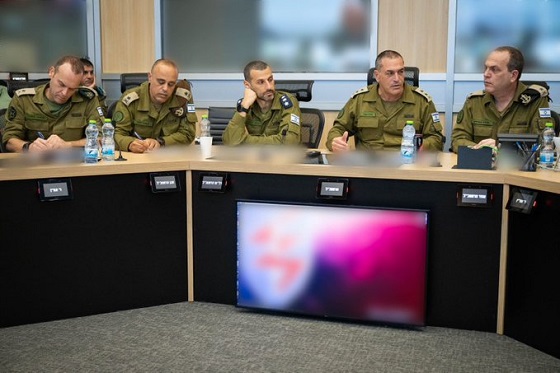
 conflict1 day ago
conflict1 day agoDespite shaky start, ceasefire shows signs of holding
-

 Health1 day ago
Health1 day ago‘Transgender’ males have 51% higher death rate than general population: study
-

 Alberta1 day ago
Alberta1 day agoSo Alberta, what’s next?
-

 conflict2 days ago
conflict2 days agoWar over after 12 days? Ceasefire reached between Israel, Iran
-

 conflict1 day ago
conflict1 day ago‘They Don’t Know What The F*ck They’re Doing’: Trump Unloads On Iran, Israel
-
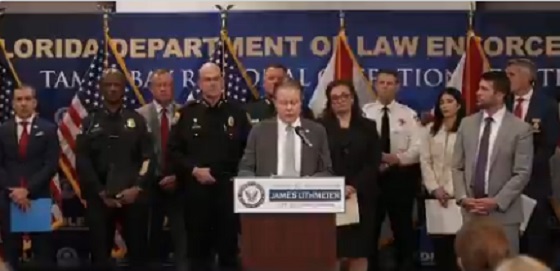
 Crime2 days ago
Crime2 days agoFlorida rescues 60 missing kids in nation’s largest-ever operation
-

 Business2 days ago
Business2 days agoYounger Casino Bettors Are Upping the Ante on Risky Gambling in British Columbia, Documents Show
-

 Business1 day ago
Business1 day agoWhile China Hacks Canada, B.C. Sends Them a Billion-Dollar Ship Building Contract





